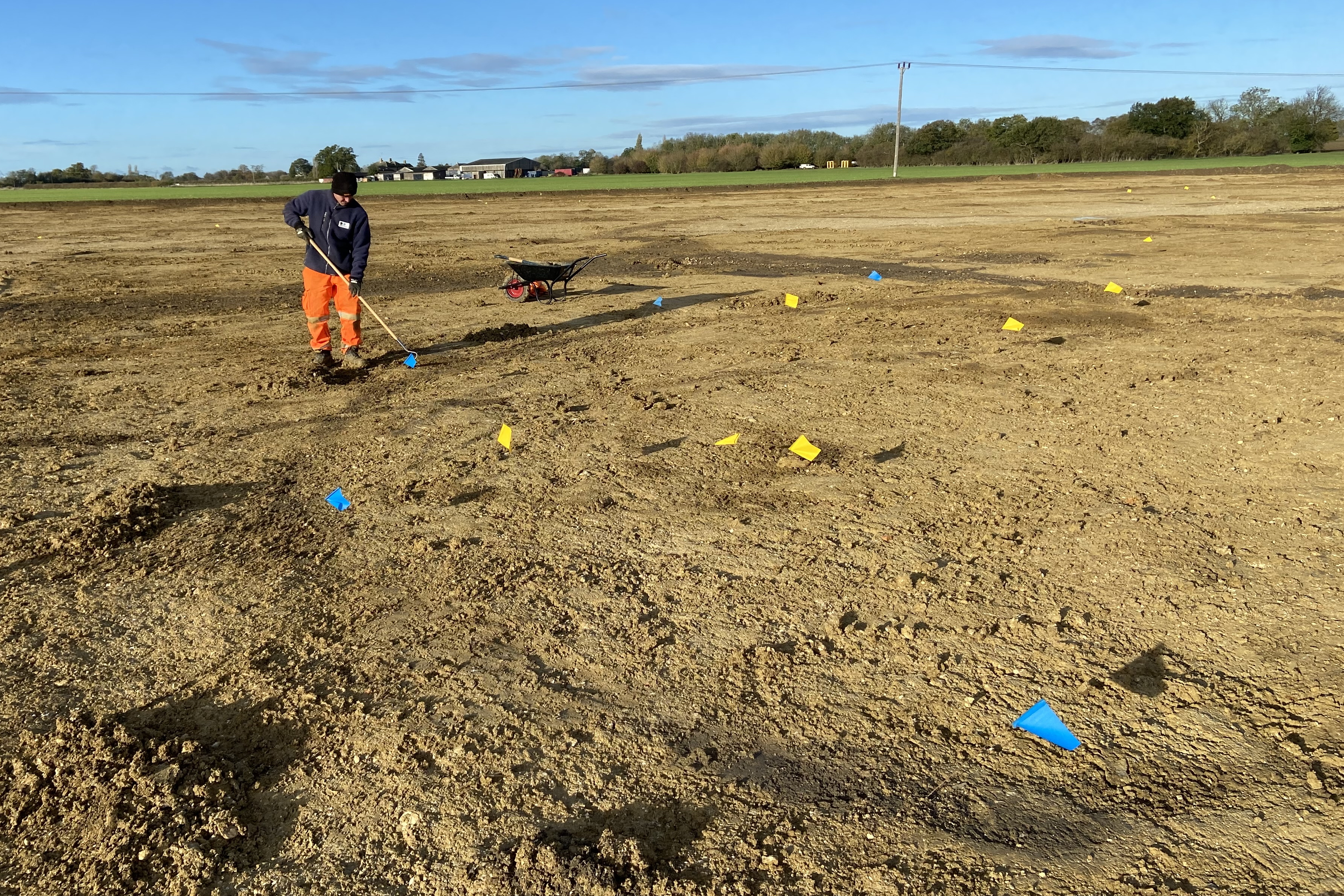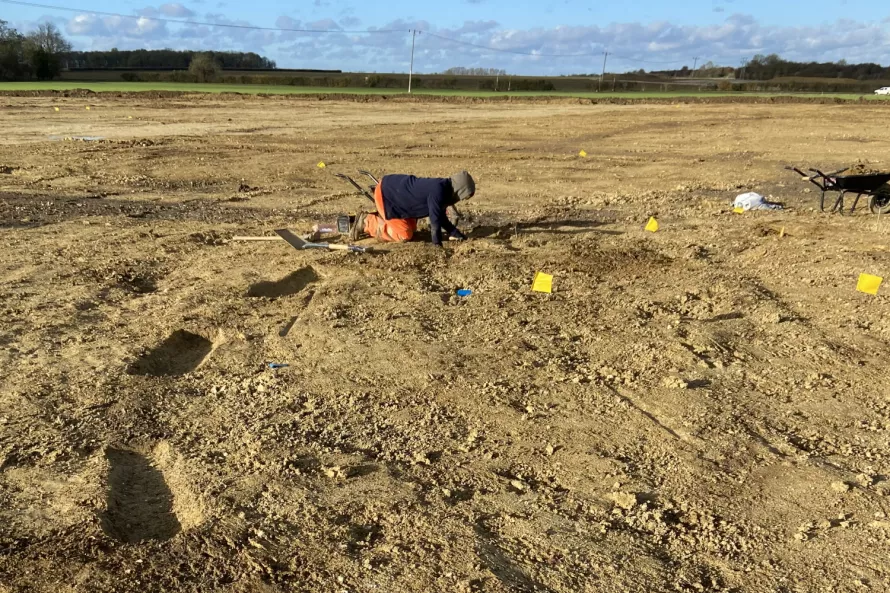Over the past month, the topsoil across a four-hectare area of land around Alconbury's Grange Farm has been moved to reveal a glimpse into the past landscape in this corner of Cambridgeshire. Two Iron Age roundhouses have been revealed, one sat within a complex of ditches acting as enclosures for livestock. Interestingly around the edge of the area, we have uncovered a series of later Romano-British cultivation rows; row after row of linear ditches which were part of an agricultural planting system, showing a shift in use from domestic settlement to an arable landscape within the space of a few hundred years.
One of the roundhouses is now fully excavated, a team of three archaeologists taking full advantage of a rare few days of recent dry weather to methodically excavate what remains of the structure after two thousand years in the ground. Roundhouses are often visible in the landscape as a ring ditch, with a break to the south or south-east marking the location of the doorway, situated to make best use of the natural sunlight and to avoid cold northerly winds entering the house. The purpose of the ring ditch itself is still debated but often thought to have acted as a drip gully to collect rainwater falling from the roof – an early form of guttering.

The team diligently hoe the surface of the soil to show the outline of the roundhouse ring gully
Before excavation of the roundhouse could commence, the area needed to be cleared with hoes to show up the exact extent of the ring ditch which in some places was only around 20cm wide (and upon excavation sometimes only a few centimetres deep!) In some places the ring ditch also appeared to completely disappear, so similar was the sediment infilling the ditch to the surrounding natural geology. The entire ditch still remained in the ground as did some of the internal features of the roundhouse, namely small postholes once containing supports for the structure that once stood here. We've now completed our investigation of these, digging out half of the material in staggered slots for clues about their date and function.
Despite a thorough investigation of the roundhouse, we did not encounter household waste such as discarded pottery or animal bones from meals in any noticeable quantity. Perhaps we need to look at the enclosure ditches around the roundhouse to find evidence of this as other members of the team are slowly uncovering pottery fragments on a greater scale in these ditches. After all we don’t tend to leave rubbish lying around on our doorstep today, so it probably wasn’t much different in the past!
Other posts in this collection
Read our latest posts about the archaeological investigations at Alconbury.

